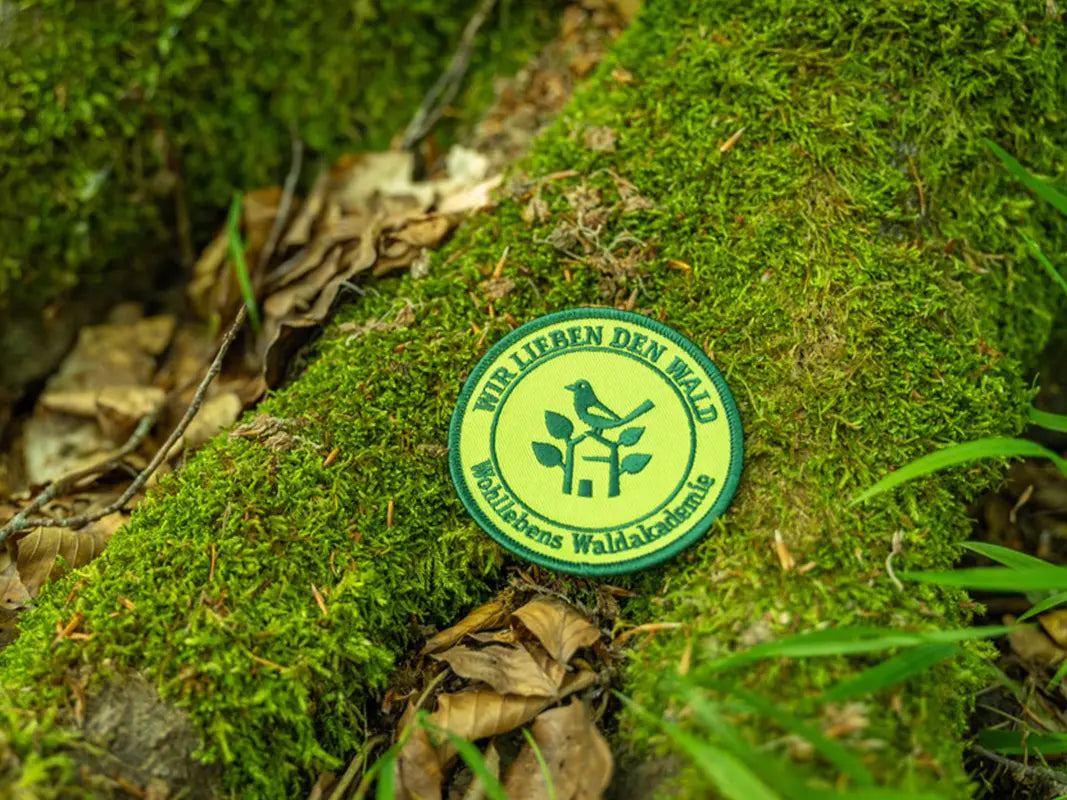Are you interested in forest education activities? With these ideas, you can let people of all ages explore the forest with all their senses.
The forest is a place full of magic and possibilities—and not just for leisurely strolls. If you're looking for new ways to make your work with people even more inspiring, nature offers countless opportunities to convey learning content in a sustainable way. The key? The senses! By actively incorporating sight, hearing, smell, taste, and touch, content is anchored much better and more vividly than if it is only explained theoretically. I can sharpen certain senses by consciously switching off another, for example, by closing my eyes.
Here are a few practical ideas on how you can use your senses in the forest to accompany and inspire your participants, whether children or adults, in nature in a completely new way:
Seeing – Seeing the forest through new eyes
We often perceive the forest only superficially, overlooking many details. However, by carefully observing and taking time for this wonderful ecosystem, we can discover much more and emerge from the forest with different eyes.
Activity: Camera and photographer
Participants pair up. One person closes their eyes (the camera). The other (the photographer) carefully guides the camera to a specific spot where a "photo" is to be taken. To do this, the photographer taps their shoulder (the shutter release), and the camera opens its eyes for a moment (taking a photo) and then closes them again. The photographer can indicate to the camera where the subject is (near, far, above, below), thus adjusting the "lens."
Once three pictures have been taken, the camera is returned to its starting point. The partner is then asked to search for the subjects or—a variation for adults—to simply keep the pictures in their memory. When one partner is finished, they swap places.
The brief moment in which the camera can see something leads to very concentrated visual perception because attention is focused.
Listening – Discovering the sounds of nature
The forest is full of sounds that we often overlook in everyday life. By using the sense of hearing in a targeted way, you can open up a new world of sounds to your participants.
Activity: Sound map
Have everyone in the group pause at a specific spot in the forest and consciously perceive the sounds. Then, record on a "sound map" which sounds were heard at which location. Whether it's birdsong, rustling leaves, or the cracking of branches—every sound has its own story.
Smell – Feel the scent of the forest
Our sense of smell is often underestimated, but it can help us establish a deeper connection with nature.
Activity: Guessing forest scents
Blindfold the participants and hold various typical forest objects (e.g., needles, moss, soil) under their noses. The task is to guess what they are. This exercise helps to sharpen the often subconscious sense of smell and experience the forest in a completely new way.

Train yourself online to become a forest educator
If nature and forest education is your passion and you want to delve deeper into its goals, approaches, and activities and integrate them into your daily professional life, our online "Forest Ambassador" training is just right for you! In 10 exciting modules, you'll learn over 6 months how to share your passion for the forest with others.
Get more infoTaste – Feel the forest on your tongue
Yes, even the forest can taste good! But how?
Activity: Do you know what trees taste like?
Safety note: You need to know exactly which plants are edible and which aren't. You should also check with participants about any intolerances or allergies beforehand. Plants with "problematic" ingredients are not suitable for this activity.
Offer participants plants or their parts to taste. Let them guess what they are. You can also combine smell and taste and let people figure out what belongs together.
You can also just give the “test subjects” a piece of food that they should describe or chew very slowly and consciously.
A particular challenge is to identify different tree species based on their taste.
Feeling – Understanding the textures of the forest
By feeling tree bark, leaves or moss, the sense of touch is activated and the forest can be experienced in a new way.
Activity: Tree Touching
Similar to "Photographer and Camera," one partner is blindfolded. They are then led to a tree and given a few minutes to get to know the tree by touch. How thick is it? What does the bark feel like? Where are the branches? Can you feel the leaves? Are there roots you can feel?
Once the person has explored the tree sufficiently, they are led back. They are then asked to search for the tree with their eyes open.






Leave a comment
All comments are moderated before being published.
This site is protected by hCaptcha and the hCaptcha Privacy Policy and Terms of Service apply.